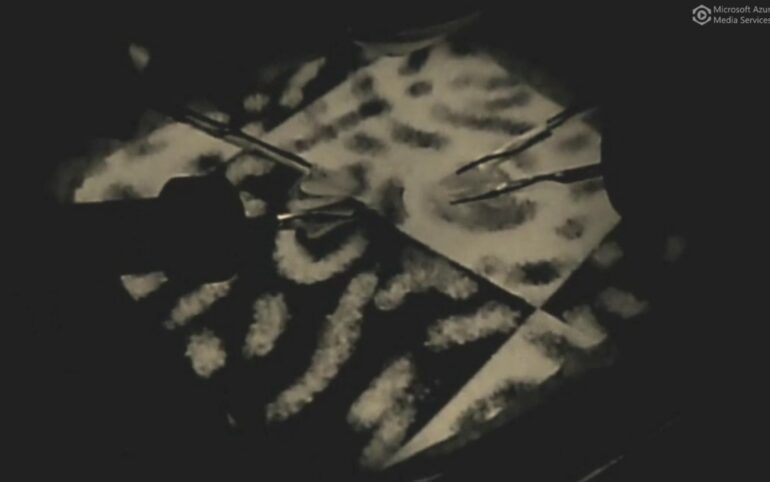A zebrafish swims toward its intended target, but strong currents push it off course. Nevertheless, the tiny fish swims back to its original location, determined to finish its journey.
How do animals know where they are in their environment, and how does this determine their subsequent choices? Scientists at HHMI’s Janelia Research Campus discovered that the hindbrain—an evolutionarily conserved or “ancient” region in the back of the brain—helps animals compute their location and use that information to figure out where they need to go next.
The new research, being published in the journal Cell on Dec. 22, uncovers new functions for parts of the “ancient brain,” findings that could apply to other vertebrates.
Whole-brain imaging reveals new networks
To figure out how animals understand their position in the environment, researchers, led by En Yang, a postdoc in the Ahrens Lab, put tiny translucent zebrafish, barely half a centimeter in length, in a virtual reality environment that simulates water currents. When the current shifts unexpectedly, the fish are initially pushed off course; however, they are able to correct for that movement and get back to where they started.
While a zebrafish is swimming in the virtual reality environment, the researchers use a whole-brain imaging technique developed at Janelia to measure what is happening in the fish’s brain. This technique allows the scientists to search the entire brain to see which circuits are activated during their course-correcting behavior and disentangle the individual components involved.
The researchers expected to see activation in the forebrain—where the hippocampus, which contains a “cognitive map” of an animal’s environment, is located. To their surprise, they saw activation in several regions of the medulla, where information about the animal’s location was being transmitted from a newly identified circuit via a hindbrain structure called the inferior olive to the motor circuits in the cerebellum that enable the fish to move. When these pathways were blocked, the fish was unable to navigate back to its original location.
These findings suggest that areas of the brainstem remember a zebrafish’s original location and generate an error signal based on its current and past locations. This information is relayed to the cerebellum, allowing the fish to swim back to its starting point. This research reveals a new function for the inferior olive and the cerebellum, which were known to be involved in actions like reaching and locomotion, but not this type of navigation.
“We found that the fish is trying to calculate the difference between its current location and its preferred location and uses this difference to generate an error signal,” says Yang, the first author of the new study. “The brain sends that error signal to its motor control centers so the fish can correct after being moved by flow unintentionally, even many seconds later.”
A new multiregional hindbrain circuit
It is still unclear whether these same networks are involved in similar behavior in other animals. But the researchers hope labs studying mammals will now start looking at the hindbrain for homologous circuits for navigation.
This hindbrain network could also be the basis of other navigational skills, such as when a fish swims to a specific place for shelter, say the researchers.
“This is a very unknown circuit for this form of navigation that we think might underlie higher order hippocampal circuits for exploration and landmark-based navigation,” says Janelia Senior Group Leader Misha Ahrens.
More information:
Misha B. Ahrens, A brainstem integrator for self-location memory and positional homeostasis in zebrafish, Cell (2022). DOI: 10.1016/j.cell.2022.11.022. www.cell.com/cell/fulltext/S0092-8674(22)01466-0
Provided by
Howard Hughes Medical Institute
Citation:
Lost fish find their way, thanks to their ‘ancient brain’ (2022, December 22)



